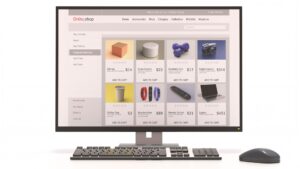In today’s digital-first world, high-quality visuals are essential for capturing audience attention, building brand identity, and driving conversions. Traditionally, companies have relied on expensive photoshoots to create compelling marketing content. However, with the rise of Computer-Generated Imagery (CGI), brands can now produce stunning, hyper-realistic visuals without the need for traditional photography.
CGI is transforming the way businesses approach branding and advertising by offering cost-effective, flexible, and visually striking alternatives to photoshoots. In this article, we’ll explore how CGI works, its advantages over traditional photography, and why companies across industries are adopting CGI to elevate their marketing efforts.
What Is CGI and How Does It Work?
Definition of CGI
CGI, or Computer-Generated Imagery, is the process of creating digital visuals using specialized software. These visuals can range from simple 3D models to complex, photorealistic animations. CGI is widely used in movies, video games, advertisements, and now—more than ever—brand marketing.
How CGI Is Used in Branding and Marketing
Companies leverage CGI to create everything from product renders and promotional images to immersive advertisements. Instead of staging physical photoshoots, brands can develop detailed, lifelike visuals entirely in a digital environment. This allows for complete creative control over lighting, angles, textures, and colors.
CGI vs. Traditional Photography
Unlike traditional photography, where real-world limitations such as weather, location, and resource availability can impact production, CGI offers unlimited creative possibilities. With CGI, brands can design and modify visuals on demand, ensuring a level of precision and customization that photography often cannot match.
Benefits of Using CGI for Branding and Marketing
1. Cost-Effectiveness
One of the primary reasons brands turn to CGI is its ability to significantly reduce costs associated with traditional photography. Expenses such as hiring models, renting locations, paying photographers, and post-production editing can quickly add up. With CGI, businesses can create entire marketing campaigns at a fraction of the cost.
2. Unlimited Creative Possibilities
Traditional photoshoots are bound by physical constraints—lighting conditions, location availability, and real-world limitations. CGI removes these barriers, allowing brands to conceptualize and create anything imaginable. Whether it’s futuristic cityscapes, surreal environments, or impossible product demonstrations, CGI makes it possible.
3. Faster Production Time
Photoshoots require careful planning, scheduling, and execution. Additionally, post-production editing can take weeks. CGI accelerates this process by enabling quick adjustments and revisions without the need for reshoots. Brands can iterate on designs swiftly, making CGI ideal for fast-paced marketing campaigns.
4. Consistency in Branding
CGI allows brands to maintain a consistent aesthetic across all marketing materials. Whether it’s a product launch or a seasonal campaign, CGI ensures that every image, animation, and video aligns perfectly with the brand’s visual identity.
5. Environmentally Friendly Solution
Traditional photoshoots often involve travel, material waste, and excessive energy consumption. CGI eliminates these factors, making it a sustainable choice for brands looking to reduce their carbon footprint while maintaining high-quality visuals.
Industries Benefiting from CGI Branding
1. E-Commerce and Product Visualization
CGI is revolutionizing the e-commerce industry by enabling brands to create photorealistic 3D product renders. These renders allow customers to explore products from every angle, providing an interactive and immersive shopping experience.

2. Real Estate and Architecture
Real estate developers and architects use CGI to create virtual property tours and pre-construction visualizations. Instead of showcasing unfinished buildings, CGI allows potential buyers to see exactly what a property will look like upon completion.
3. Automotive Industry
Car manufacturers leverage CGI to present detailed vehicle designs before production. Instead of waiting for a physical prototype, CGI enables brands to showcase new models through dynamic 3D animations and interactive previews.
4. Fashion and Apparel
Fashion brands are increasingly using CGI to develop digital clothing try-ons, virtual models, and immersive fashion shows. This approach helps brands reduce costs associated with physical samples and photoshoots.
5. Food and Beverage
CGI allows food brands to create hyper-realistic visuals of their products for marketing materials. Whether it’s an advertisement, menu design, or packaging, CGI ensures that food items look appetizing and visually consistent across all platforms.
How to Implement CGI in Your Branding Strategy
1. Choose the Right CGI Partner or Software
Brands can either hire professional CGI artists or invest in powerful CGI software like Blender, Cinema 4D, or Maya to create their own visuals.
2. Define Your Visual Goals
Clearly outline the purpose of your CGI visuals. Are you creating a product render, an advertisement, or a social media campaign? Understanding your goals will help you achieve the best results.
3. Create High-Quality CGI Assets
Ensure your CGI renders are detailed, realistic, and polished. High-quality assets contribute to a professional and engaging brand image.
4. Integrate CGI with Other Marketing Strategies
Combine CGI visuals with social media, content marketing, and advertising to maximize their impact and reach a wider audience.
5. Test and Optimize for Engagement
Monitor how your audience interacts with CGI content and make data-driven adjustments to improve engagement and conversions.
Common Myths About CGI in Branding
Myth 1: CGI Looks Fake and Unnatural
With advancements in rendering technology, CGI can now produce visuals that are indistinguishable from real photography.
Myth 2: Only Big Brands Can Afford CGI
Thanks to open-source software and affordable CGI services, small businesses can now leverage CGI without a massive budget.
Myth 3: CGI Replaces Photographers and Designers
CGI is a tool, not a replacement. It complements traditional photography and design, offering brands more creative freedom.
Future of CGI in Brand Marketing
1. AI and Machine Learning Integration
Artificial Intelligence (AI) is making CGI more accessible by automating rendering processes and enhancing realism.
2. Real-Time Rendering for Faster Production
Innovations in real-time rendering technology are reducing production times, making CGI an even more efficient solution.
3. Virtual and Augmented Reality Applications
Brands are integrating CGI into VR and AR experiences, allowing customers to interact with products in immersive digital environments.
Conclusion
CGI is revolutionizing branding by offering cost-effective, high-quality, and flexible visual solutions. Companies across industries are leveraging CGI to create compelling marketing content that stands out. As technology advances, CGI will continue to shape the future of brand marketing, providing brands with endless creative possibilities.
Now is the perfect time to integrate CGI into your branding strategy. Whether you need stunning product visuals, immersive animations, or hyper-realistic renders, CGI can set your brand apart. Want to explore how CGI can transform your visuals? Contact us today to bring your vision to life!
FAQs
1. Is CGI More Expensive Than Traditional Photography?
No, CGI is often more cost-effective in the long run due to reduced production and reshoot expenses.
2. How Can Small Businesses Use CGI Affordably?
Many free tools, like Blender, offer powerful CGI capabilities for small businesses on a budget.
3. Can CGI Match the Realism of Photography?
Yes, with high-quality rendering techniques, CGI can look as realistic as traditional photography.
4. What Are the Best CGI Tools for Branding?
Popular tools include Blender, Cinema 4D, Maya, and KeyShot.
5. How Long Does It Take to Create CGI Visuals?
The time varies based on complexity—simple renders take hours, while detailed projects can take days.






